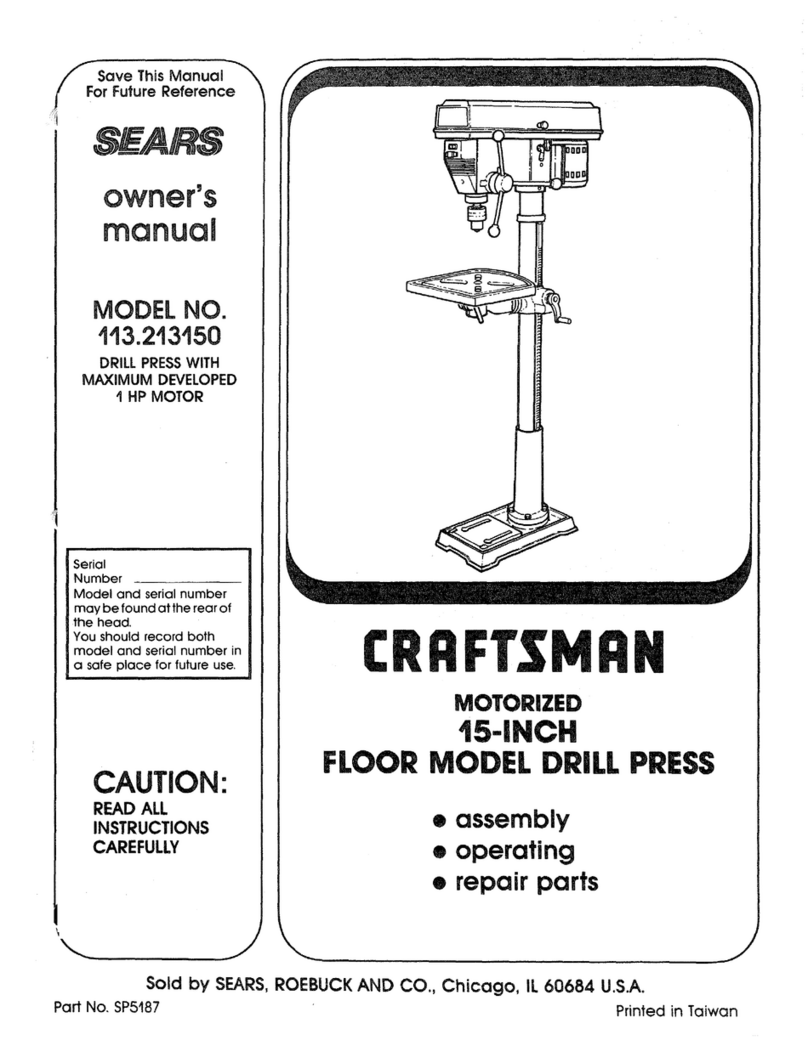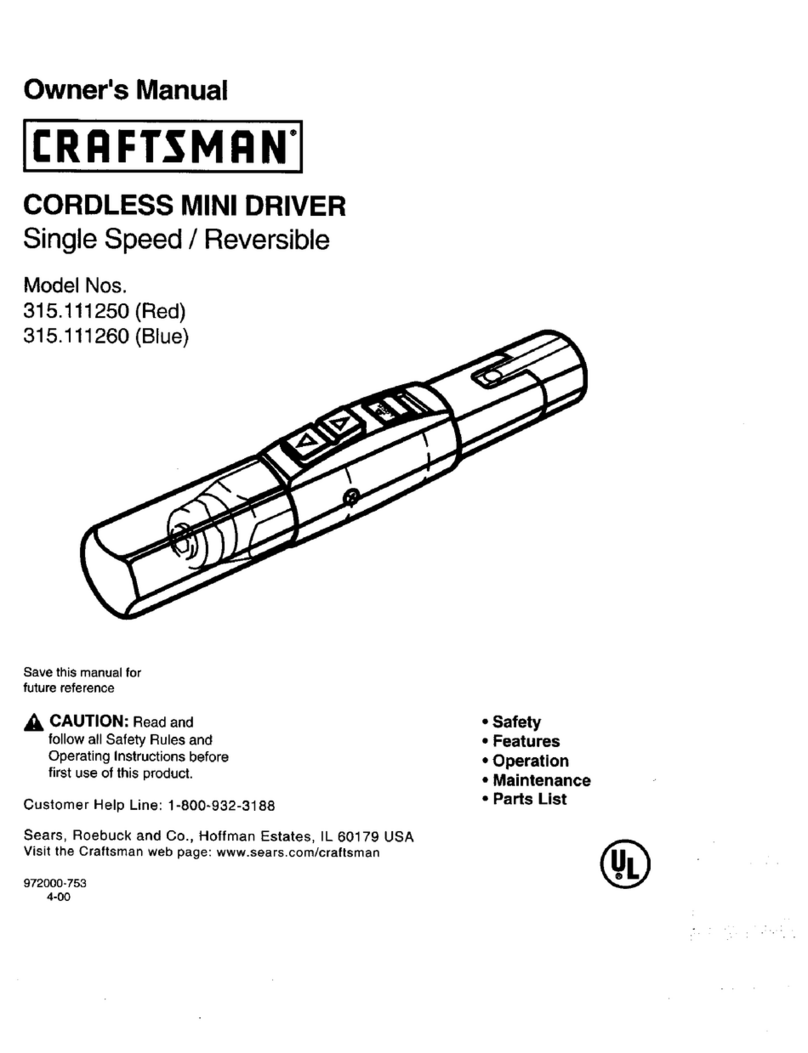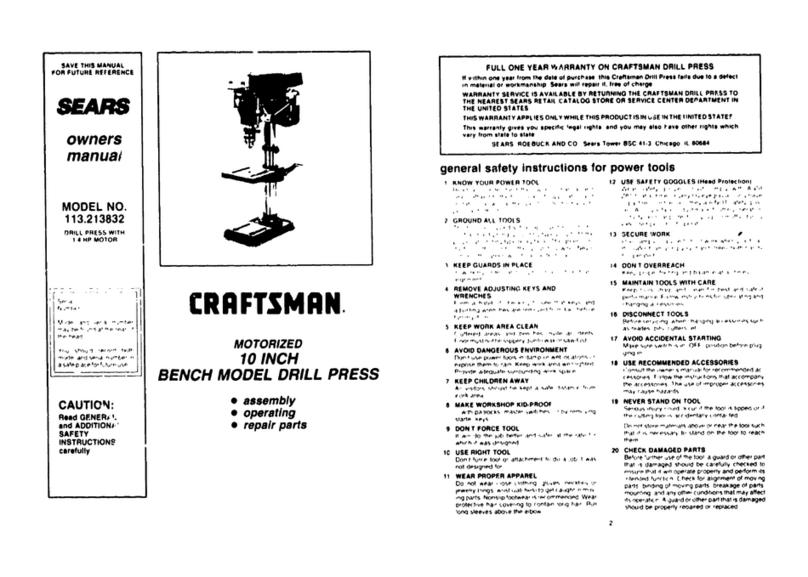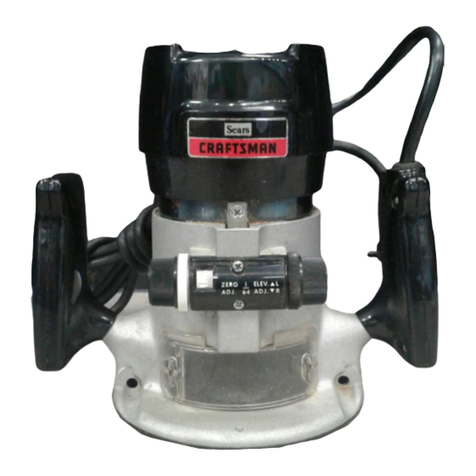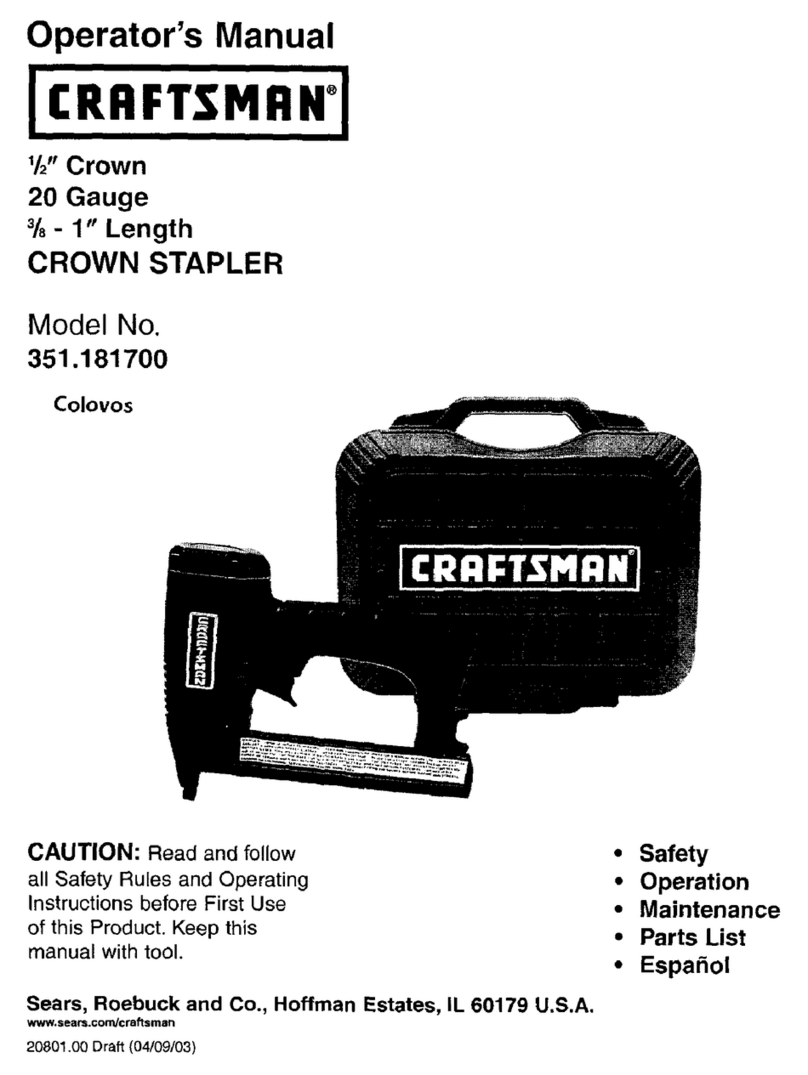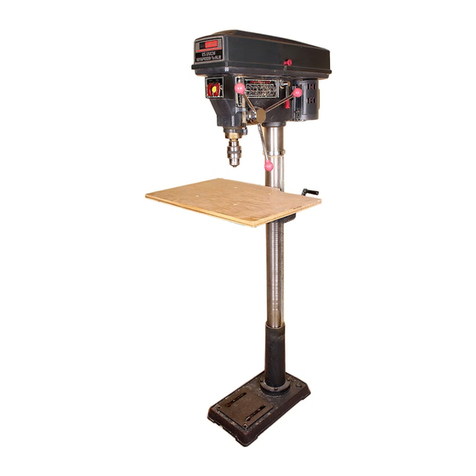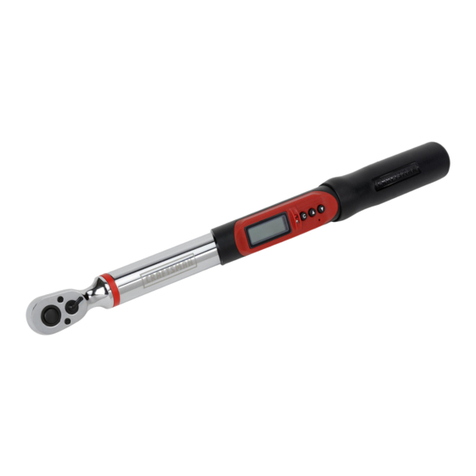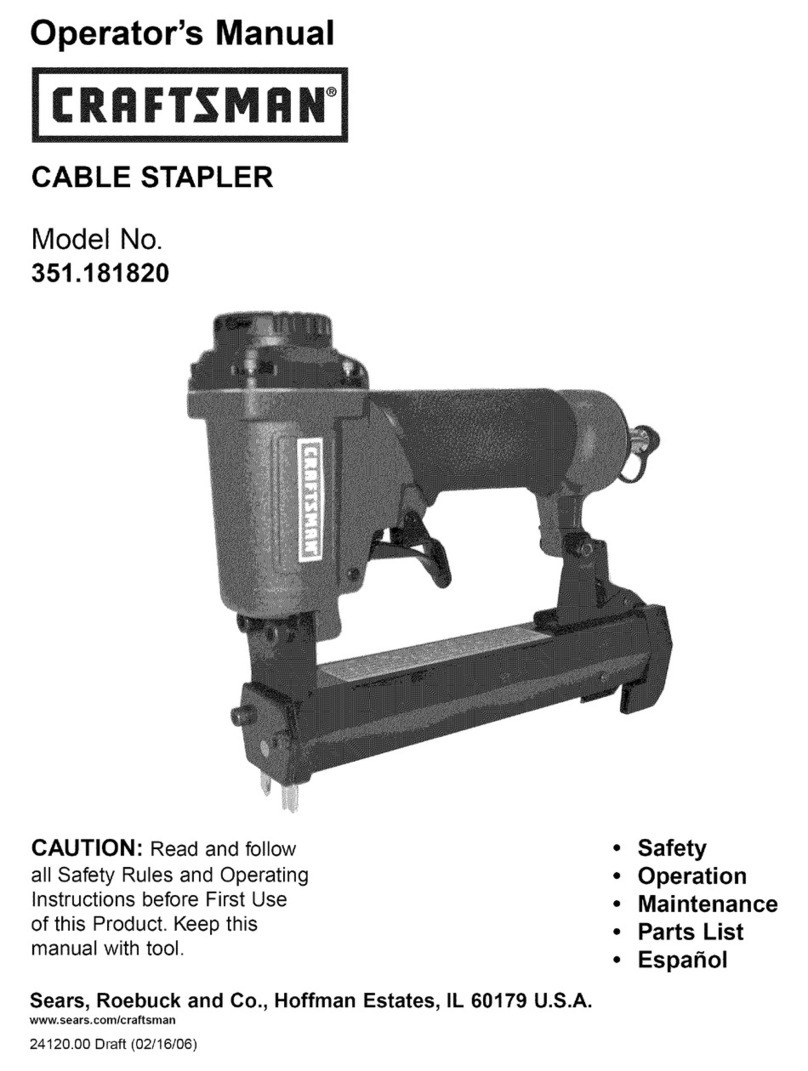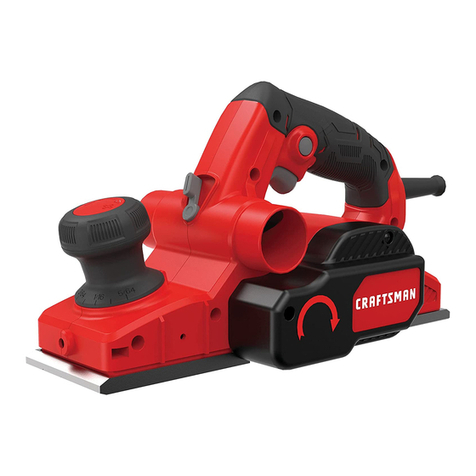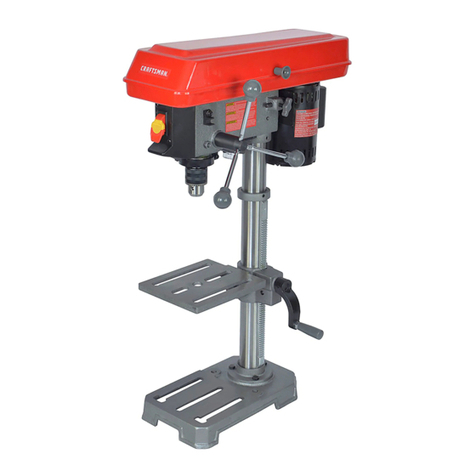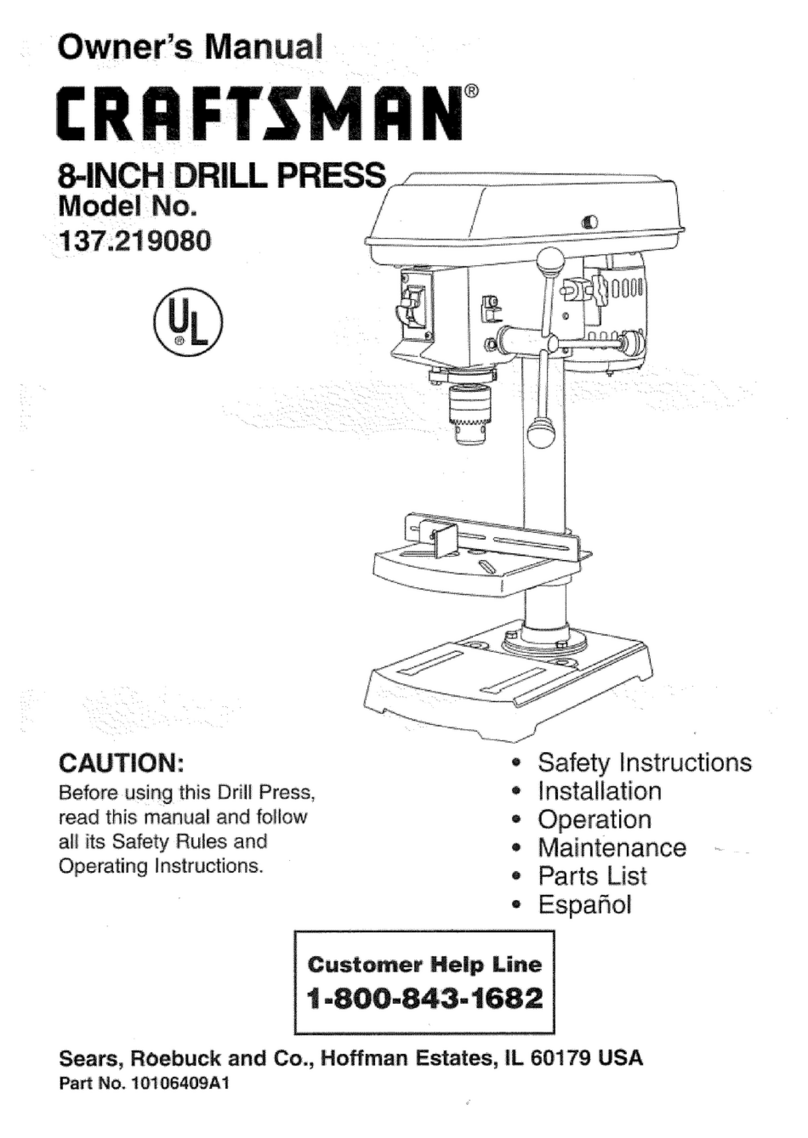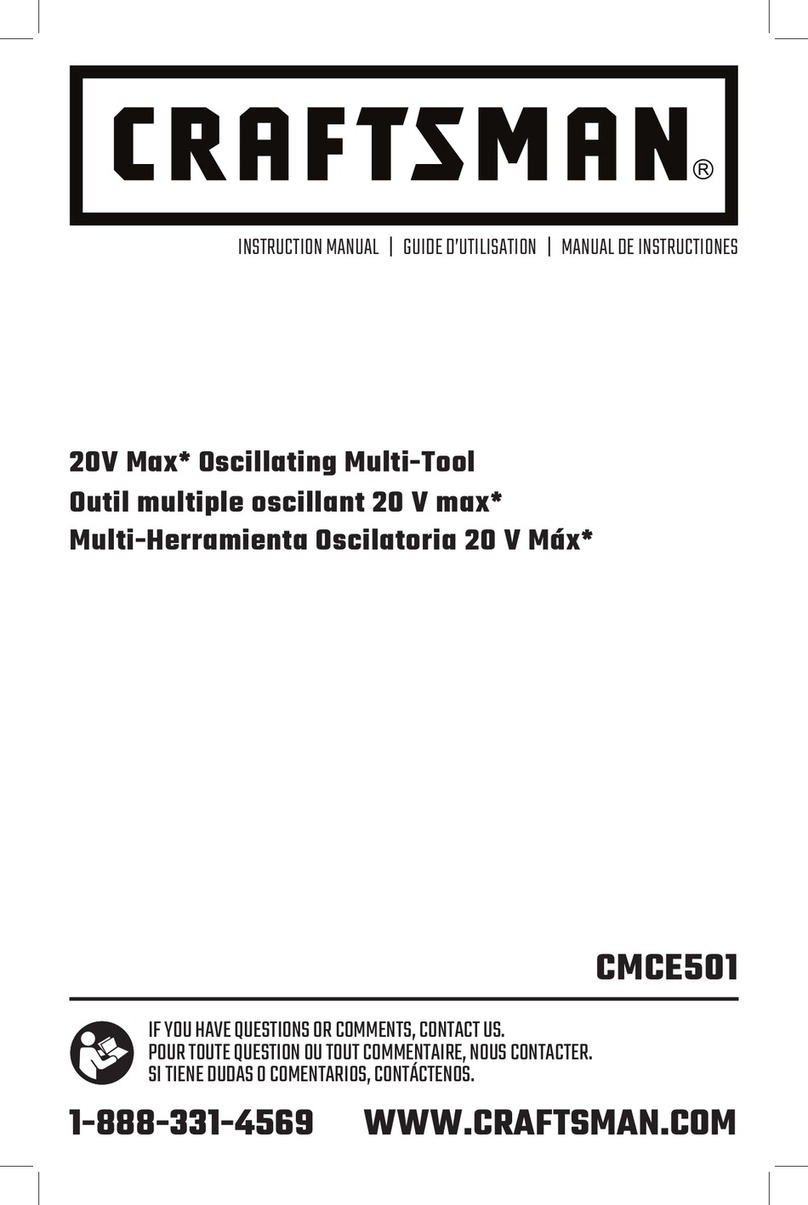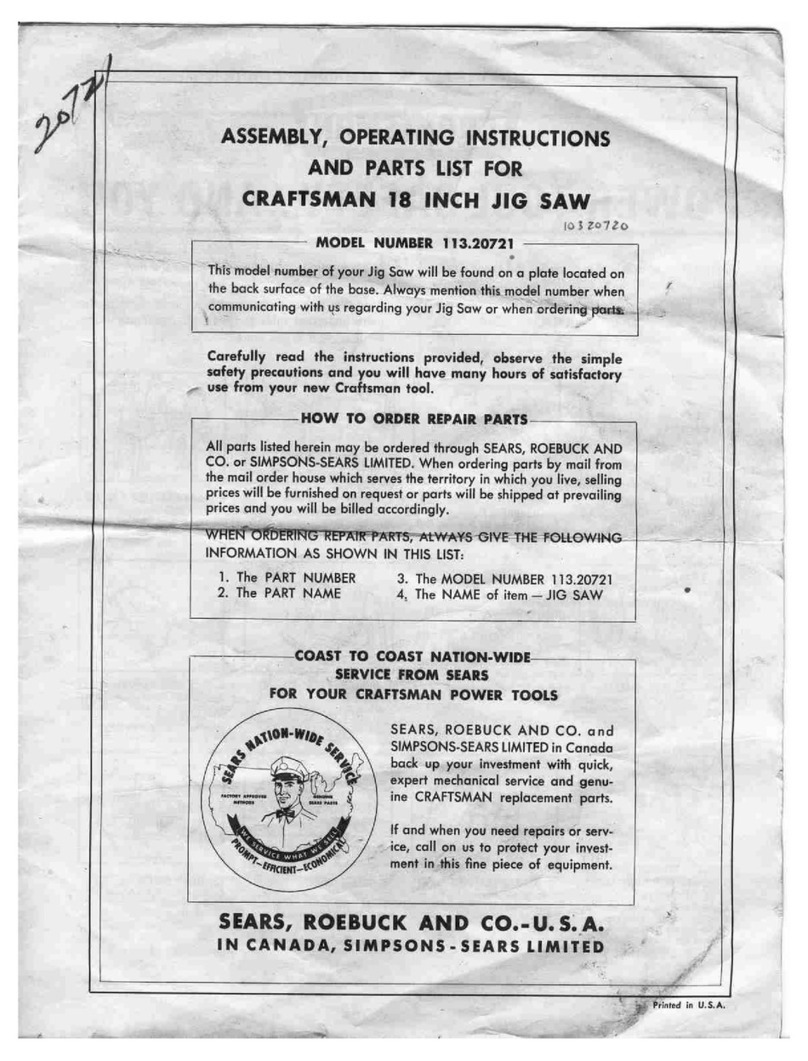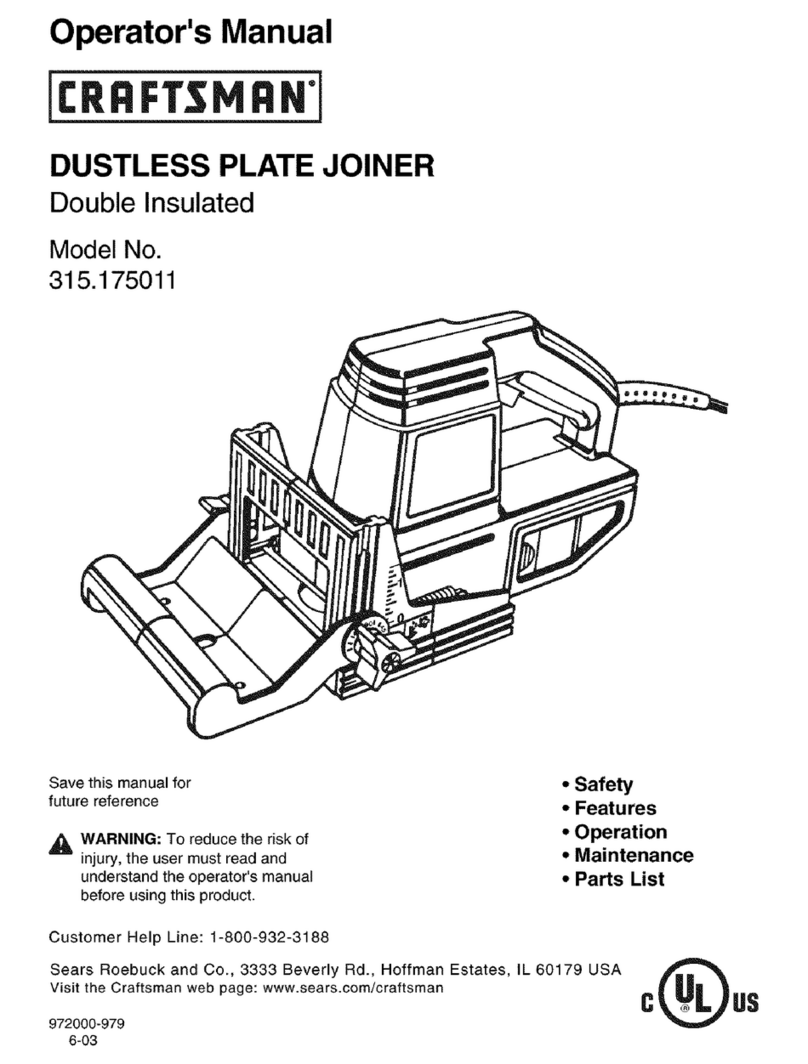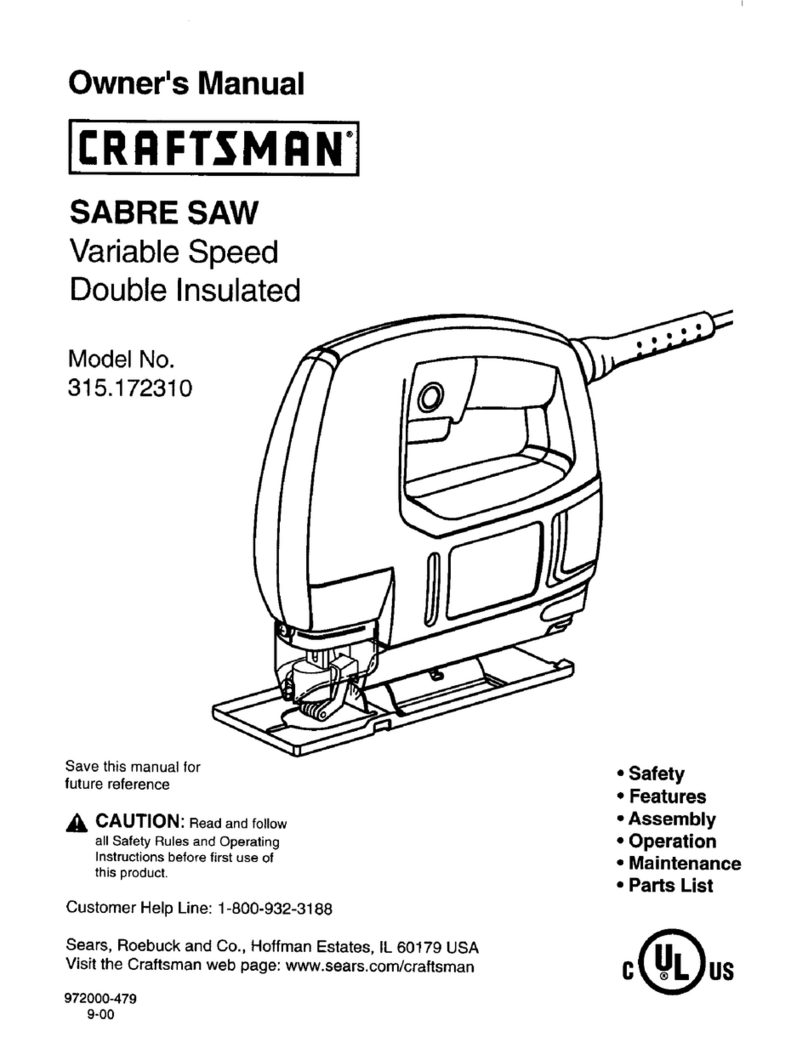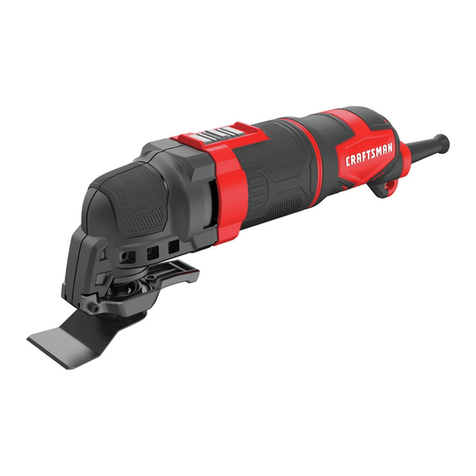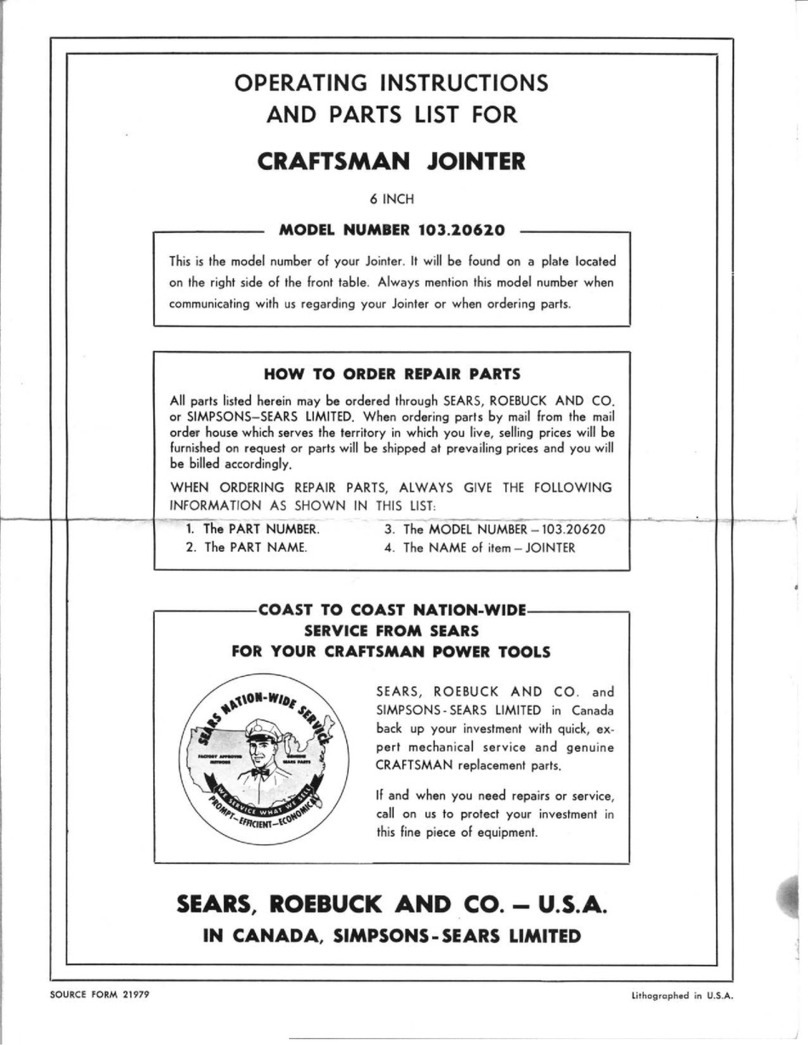UNPACKING
Your new plunge router comes fully assembled. After removing it from the box, inspect itcarefully to make sure that it isnot
damaged and that no parts are missing. See Figure 1. The following accessories should also be included in the box:
1_ Combination Wrench (3/8"- 7/8") 4, Roller(Contour) Guide
2. 1/4"Adapter 5. Guide Bushing
3. Edge Guide
FEATURES
Your electronic router isa versatile woodworking toot which will give you years of trouble-free performance. It is engineered
with the professional in mind, but its ease of operation allows the amateur to produce work which is beautiful and precise.
3.5 HORSEPOWER MOTOR
Your router has a powerful 3.5 horsepower motor with suffi-
cient power to handle the toughest routing jobs. The motor
also has externally accessible brushes for ease of servicing.
SOFT START
The soft start feature builds motor RPM gradually tominimize
start-up torque. Pressing or releasing the "on-oft" trigger will
turn your router on or off.
DEPTH CONTROL KNOB
Alargedepth control knob makes precise depth ofcut changes
possible. It also is very helpful when making depth of cut
changes with your router mounted upside down on a router
table.
DEPTH STOP SYSTEM
The depth stop block located on the base of your router
provides three adjustable stops and three fixed stops for
quick depth of cut changes. A depth adjustment scale makes
quick adjustments to depth of cut changes possible. The
spring loaded adjustment knob quick releases stop bar by
depressing center of knob.
1/4" AND 1/2" SHANK CAPACITY
Your router has a 1/2" diameter collet that accepts cutters
with 1/2" shanks. An adapter has been provided so that
cutters with 1/4" shank bits can also be used,
CHIP SHIELD
A clear plastic see-through chip shield has been provided on
the base of your router for protection against flying dust and
chips. It is designed to fit the front opening of the router base,
POSiLOCK SPINDLE LOCK
Aposilock spindle lock secures the spindle so that only one
wrench is needed to loosen collet nut and change cutters. A
spindle lockindicator light alerts you that spindle is locked if
you connect router to power supply before unlocking spindle.
NOTE: Your router wilt not run if spindle is locked.
"LOCK-ON" FEATURE"
Your router is equipped with a "lock-on" feature that is conve-
nient when continous operation for extended periods of time
is required.
LARGE HANDLES
Your router has large oversized handles for easy handling and
maintaining proper control when routing. The left handle
allows you to set cutter depth of cut when making plunge
cuts, while the right handle provides easy access to the "on-
off" trigger, "lock-on" button, and variable speed control se-
lector. The handles have also been designed so that they
are comfortable and easy to grasp when operating in differ-
ent positions or at different angles.
VARIABLE SPEED SWITCH WITH ELEC-
TRONIC SPEED CONTROL (Feedback Switch)
Your router has advanced electronic features, designed to
assist you ingetting the maximum use from your router. By
making proper speed selections, your router+can be ad-
justed to specfic routing needs. This eliminates much of the
guess work previously needed to perform a given job. Both
the experienced and inexperienced router users benefit,
obtaining professional like results with fewer job errors.
The variable speed control allows the router speed to be
adjusted from 10,000 to 25,000 rpm+ The variable speed
control selelctor is conveniently located inside the right handle
near the operator's thumb or hand.
The electronic feature of your router introduces the flexibility
of adjusting the motor speed to required job conditions. An
electronic speed control module senses the load applied to
the motor, and increases or decreases motor voltage to
compensate forand maintain desired RPM.
Speed can be set according to the approximate cutter diam-
eter you will be using and to the hardness of the material
being cut. The best cuts are made when the cutter is fed
through material at the proper rate of feed.
ROUTER ACCESSORIES
Your router comes equipped with several accessories. The
edge guide keeps the cutter parallel with an eclge of the
workpiece when cutting grooves and rabbets. The roller
(contour) guide allows the router to be used totrim laminates
and make cuts parallel with an irregularly shaped edge. The
template guide bushing enables the router to follow a tem-
plate for making duplicate shapes.
Page 4




